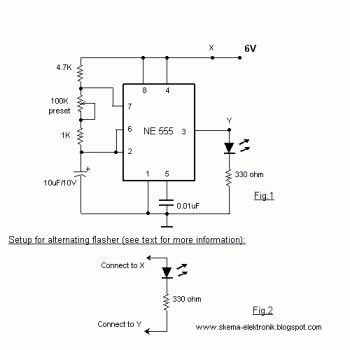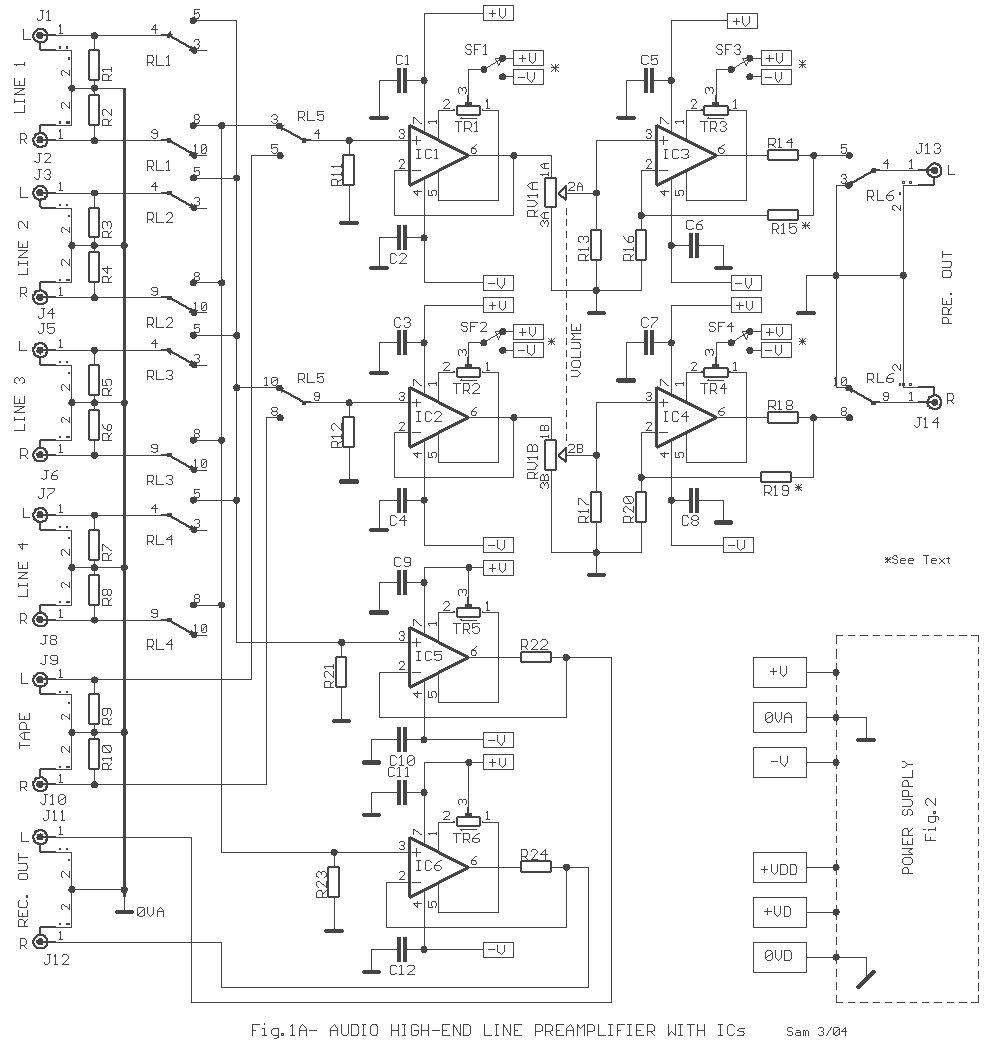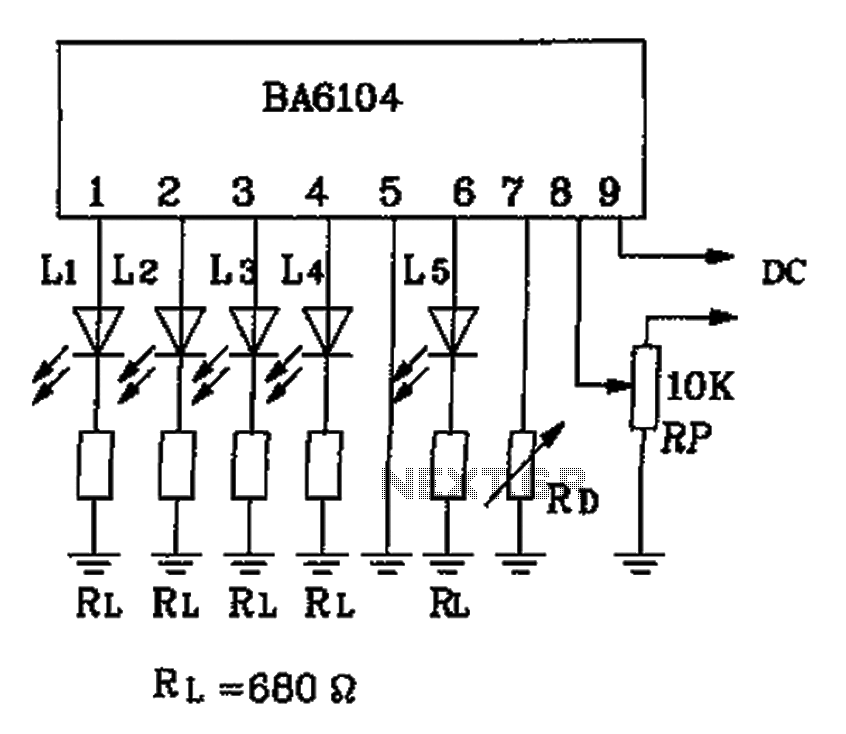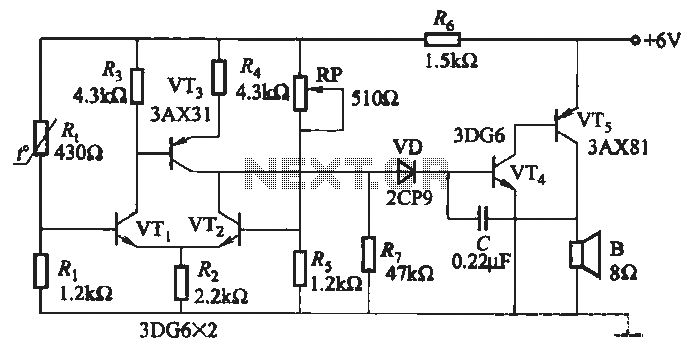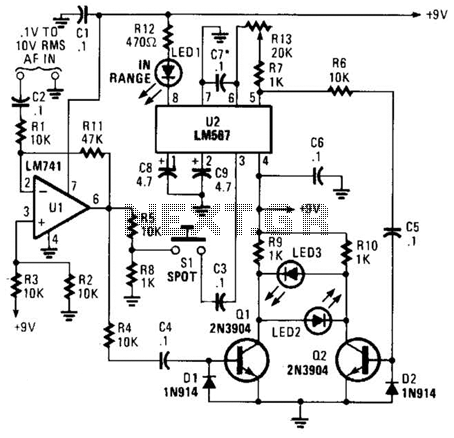
Transmitting audio over laser or LED

This circuit transmits audio information using light waves. It employs amplitude modulation (AM) to vary the intensity of an LED, which is detected by a cadmium sulfide photocell that changes its resistance based on light intensity. The circuit includes two audio transformers, each rated between 8 to 1000 ohms. On the receiving side, the transformer functions as a voltage booster. Additionally, a battery and resistor are integrated into the photocell receiving circuit. Caution is advised, as an LED is used in the design due to previous damage to a laser pointer during experimentation. The audio signal from the sound card is approximately 1 Volt AC at maximum, which is converted to around 12.5V on the receiving end, though measurements can vary.
This circuit is designed to transmit audio signals wirelessly through light modulation, utilizing an LED as the transmitter and a cadmium sulfide (CdS) photocell as the receiver. The fundamental principle involves amplitude modulation, where the audio signal alters the intensity of the LED light output. As the LED's brightness changes in response to the audio signal, the CdS photocell detects these variations in light intensity, resulting in a corresponding change in its resistance.
The circuit configuration includes two audio transformers, each capable of handling impedances ranging from 8 to 1000 ohms. The transformer on the receiving side is particularly significant, as it serves as a voltage booster, enhancing the signal for better detection and processing. The integration of a battery and resistor in the receiving circuit is crucial for providing the necessary power and stability for the photocell operation.
It is important to note that the choice of an LED over a laser pointer was made to avoid potential damage, as initial experiments with a laser pointer resulted in failure. The audio input from a sound card, typically around 1 Volt AC at maximum output, is modulated and transmitted as light. On the receiving end, this signal is amplified, with measurements indicating that the output can reach approximately 12.5V, although variations may occur based on the specific components and configurations used.
In summary, this circuit represents an innovative approach to wireless audio transmission, leveraging light modulation techniques to achieve effective communication over short distances. Proper component selection and careful assembly are essential to ensure reliable performance and signal integrity.Want to send your audio information via a light wave across the room I built this simple circuit with some modifications that transmits an audio signal via light. The signal simply amplitude modulates the light intensity (aka AM) of a LED and a receiving cadmium sulfide photocell changes its resistance as the intensity varies.
Both sides have 8 t o 1000 ohm audio transformers, although on my circuit I ended up using the transformer on the receiving side as a voltage booster. I also added a battery and resistor to the photocell receiving side. Be careful-I used an LED because I destroyed a cheap laser pointer when trying the first circuit. The problem with it is the sound card audio is approximately 1 Volt AC at max, and this gets converted to ~12.
5V on the other side (although I found output was usually around. 5 V on the sound card and ~4 to 5V on the other side of the transformer). At least that`s what I measured-I`ve seen people read 4V on sound cards, but I don`t know which is correct. 🔗 External reference
This circuit is designed to transmit audio signals wirelessly through light modulation, utilizing an LED as the transmitter and a cadmium sulfide (CdS) photocell as the receiver. The fundamental principle involves amplitude modulation, where the audio signal alters the intensity of the LED light output. As the LED's brightness changes in response to the audio signal, the CdS photocell detects these variations in light intensity, resulting in a corresponding change in its resistance.
The circuit configuration includes two audio transformers, each capable of handling impedances ranging from 8 to 1000 ohms. The transformer on the receiving side is particularly significant, as it serves as a voltage booster, enhancing the signal for better detection and processing. The integration of a battery and resistor in the receiving circuit is crucial for providing the necessary power and stability for the photocell operation.
It is important to note that the choice of an LED over a laser pointer was made to avoid potential damage, as initial experiments with a laser pointer resulted in failure. The audio input from a sound card, typically around 1 Volt AC at maximum output, is modulated and transmitted as light. On the receiving end, this signal is amplified, with measurements indicating that the output can reach approximately 12.5V, although variations may occur based on the specific components and configurations used.
In summary, this circuit represents an innovative approach to wireless audio transmission, leveraging light modulation techniques to achieve effective communication over short distances. Proper component selection and careful assembly are essential to ensure reliable performance and signal integrity.Want to send your audio information via a light wave across the room I built this simple circuit with some modifications that transmits an audio signal via light. The signal simply amplitude modulates the light intensity (aka AM) of a LED and a receiving cadmium sulfide photocell changes its resistance as the intensity varies.
Both sides have 8 t o 1000 ohm audio transformers, although on my circuit I ended up using the transformer on the receiving side as a voltage booster. I also added a battery and resistor to the photocell receiving side. Be careful-I used an LED because I destroyed a cheap laser pointer when trying the first circuit. The problem with it is the sound card audio is approximately 1 Volt AC at max, and this gets converted to ~12.
5V on the other side (although I found output was usually around. 5 V on the sound card and ~4 to 5V on the other side of the transformer). At least that`s what I measured-I`ve seen people read 4V on sound cards, but I don`t know which is correct. 🔗 External reference

